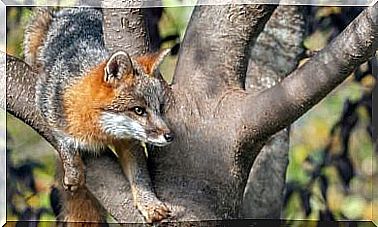Meet The Slow Loris

The slow lory is a little known primate species, but its illegal trafficking has increased considerably in recent years. Do you want to meet one of the most curious animals on the planet?
Slow Lory: Features
The slow lory is a primate that lives mainly in Southeast Asia. You can find these animals in countries like India, Bangladesh, the Philippines and the island of Java.
There are several species of slow lory, although it is mainly considered that there are eight main species. They are relatives of other primates, known as the potos, the galago and the slender slow lory, although little of their evolutionary history is known.
The slow lory can be confused with other mammals, such as sloths, as it does not look like the classic apes: its round snout and small head with large eyes resemble that of a small bear.
These animals have different color patterns depending on the species. They have a long torso and hands and feet that can hold things under pressure; which allows them to hold on tightly to trees.

The slow loris: behavior
Interestingly, the slow lory has an ability that it does not share with the rest of mammals : lories are the only mammals that have poisonous glands, located in the arm.
When these toxins are mixed with saliva, they are activated, and they can use them either to bite their predators or people or to lick their young to protect them. Despite this, the slow lory is a very calm animal and only attacks when it feels cornered.
Normally, your defense strategy is to remain immobile in the branches you live on. It is only preyed upon by snakes, eagles and, in some cases, orangutans; although civets may also prey on them occasionally.

Of this shy animal, little is known about their behavior, and their concrete social structure is unknown, although they are undoubtedly quite solitary animals.
The lory’s slow communication occurs through the olfactory marking, which marks the males’ territoriality.
Like other primates, slow lories are entirely dependent on their parents and form a strong bond with them.
They are omnivorous animals that eat various fruits, although they can also hunt small animals.
Slow Lory: In Great Threat
The truth is that several species of slow lory are threatened: of the eight species identified, five are considered vulnerable or endangered, according to the IUCN Red List.
The main threats of these animals are the fragmentation of their habitat due to problems such as oil palm plantations, but they are also one of the animals threatened by oriental medicine. Its possession as a pet is also one of the causes of its disappearance.
Furthermore, it is even becoming fashionable to “use them” in tourist activities, similar to what happens with selfies with sloths.








